Once while working on the very un-Austenian topic of cowboys and samurai as national icons, I read Owen Wister’s seminal novel, The Virginian. Suddenly the project collided with my other life as an Austen scholar. Who should appear in the wilds of Wyoming but Jane Austen?
This is not the only time Austen has been placed in the Wild West. There is a healthy subgenre of Austen adaptations that does so, including Pemberley Ranch, Buck Wild (first installment of The Bennet Boys’ Ranch), and Sam Wright’s recent Oklahoma!-style musical Prejudice and Pride. These adaptations are interesting in themselves; however, The Virginian is different. Austen’s presence in it suggests that she might actually have played a role in the formation of the Western mythology around the turn of the twentieth century.
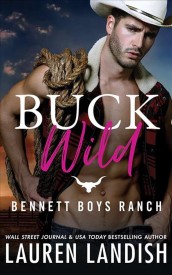 |
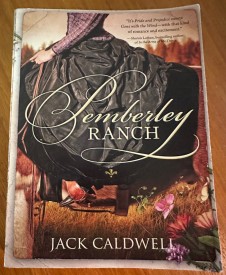 |
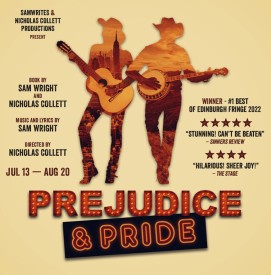 |
Owen Wister published The Virginian: A Horseman of the Plains in 1902. The novel is set in the Wyoming Territory sometime between 1874 and the year Wyoming gained statehood, 1890. It’s based on personal observations from Wister’s own time in the Western territories in the 1880s, where he was sent to recuperate after a nervous breakdown. Apart from an excellent Persuasions essay by Marilyn Francus, the connection between Austen and Wister has not received any attention whatsoever. Francus’s essay solidified my belief that Wister has deep purpose for inserting Austen into this novel. This essay cannot cover all the connections between Pride and Prejudice and The Virginian, but the ties suggest that Wister had a much better knowledge of Austen and her work than is broadly known.
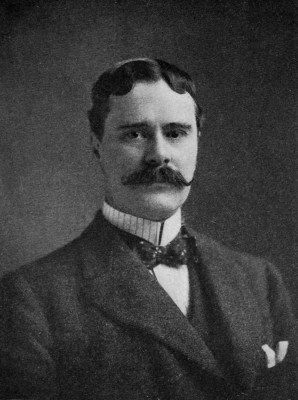
Owen Wister |
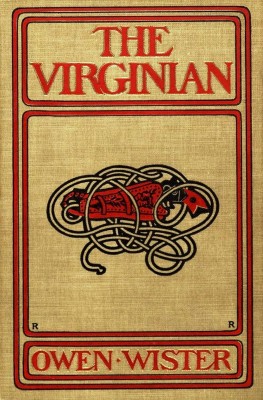
The first edition of The Virginian (1902) |
The Virginian is credited with giving birth to the American Western as a genre. It is hard to overestimate how important Wister’s novel was for cowboy iconography and the shaping of the Western. The romanticized American cowboy icon helped form American identity for at least the first half of the twentieth century, but it really took shape a bit earlier, when Buffalo Bill’s Wild West show turned morbid history into entertainment in the 1880s; it solidified in 1893 when Frederick Jackson Turner called attention to the “closing of the American frontier.” Wister’s preface to the novel stresses that the world he describes—and especially the “cowpuncher”—have disappeared: the cowboy, he writes, “will never come again. He rides in his historic yesterday . . . , the last romantic figure upon our soil” (viii–ix). This cowpuncher-hero thus emerges in print surrounded by a halo of nostalgia. In fact, both The Virginian and Pride and Prejudice are nostalgic works that celebrate what Janet Todd has called a “last pre-industrial moment.” That nostalgia is central to the utopian ideals and myth-making power of both novels.
The Virginian was tremendously popular. Wister sold many editions and republished it with a new preface in 1914. Shortly after publication, he co-authored a successful Broadway play based on the novel. Six films have been made of the novel (1914–2014), a comic book version was released in 1947, a popular TV series ran from 1962–1971, and a new play version appeared in 2000.
Adaptations of The Virginian
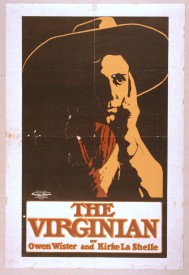
1903 Play |
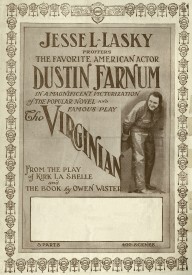
1914 Film |
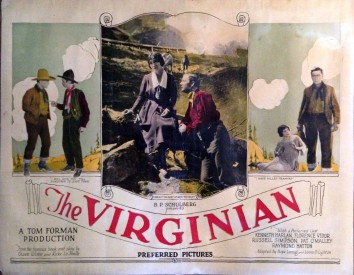
1923 Film |
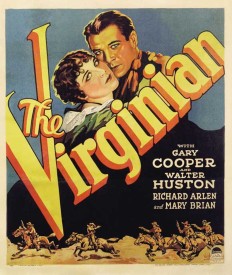
1929 Film |

1946 Film |
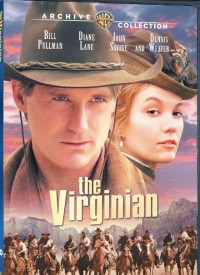
2000 TV Film |
Two decades before Rudyard Kipling’s Janeites braved the battlefields of World War I, copies of both Emma and Pride and Prejudice traveled to the Rocky Mountains and the wilds of Wyoming. (They travel there in this novel, and most likely did in fact as well.) In some small part, Jane Austen thus helped shape the quintessential American icon.
Pride and Prejudice in the wild
In The Virginian, the unnamed cowboy hero courts a heroine who is more educated than he is. Molly Stark Wood, the heroine, travels from Bennington, Vermont, to Wyoming to become a schoolteacher. Much of their courtship happens through books, as he tries to prove that he is her “best scholar” (94). Early on, Molly writes home to retrieve her favorite novels. Her mother responds, with acknowledgement of her taste: “We have sent your books . . .—Shakespeare, Tennyson, Browning, Longfellow; and a number of novels by Scott, Thackeray, George Eliot, Hawthorne, and lesser writers; some volumes of Emerson; and Jane Austen complete, because you admire her so particularly” (90). In this passage we first learn that Jane Austen is Molly Wood’s favorite author, and the unnamed hero—the eponymous “Virginian”—gets a taste of Austen’s work in subsequent chapters. Austen is not just a single mention but an important plot point.
The Virginian’s romance is rocky in more ways than one. This novel promotes the powerful Western trope of the rough-hewn hero (often from the South) who courts the more sophisticated Eastern lady. This convention juxtaposes a man superior in strength, and often in possession of a natural aristocracy and chivalric code, with a woman who is his superior in education and who (at least initially) judges class according to externals. There is a fair amount of pride, prejudice, and general misunderstanding inherent in this romantic trope because, I would argue, Wister modeled much of the structure of The Virginian on Pride and Prejudice. In both these novels, an arrogant bachelor, whose presence commands the attention of a room, has a tense interaction with a woman from a different corner of society. This woman also proves herself rather “independent and unconventional” (Wister 90). After many misunderstandings, amorous skirmishes, some significant letters, and multiple proposals, the couple eventually grows in mutual respect and “civility.” Each is limited in perspective, but together they eventually establish a stronger, “more perfect union,” metonymically uniting warring factions of society—aristocratic and democratic, wealthy and modestly poor, those with private libraries and those with more haphazard schooling. In the U.S. context, this plot device also attempts to bridge lingering Civil War stereotypes.
It’s helpful to consider Wister’s own life and knowledge of Austen. Wister was a Harvard classmate and close friend of Teddy Roosevelt, who corresponded about his opinion of Jane Austen. Wister was also (through his mother) a close friend of Henry James, the novelist, and William Dean Howells, the editor of the Atlantic. It so happens that these friends all expressed opinions about Austen in their writings. Teddy Roosevelt’s response was quite negative: he calls reading Austen a “duty performed” and indirectly suggests she is a “literary prune” (“The Books I Read” 7). Through his other two male literary friends, James and Howells, Wister was exposed to a very different, often quite ecstatic admiration of Austen. The early Henry James arguably imitated Austen in his attempt to master his own form of the novel. And although James grew more patronizing as Austen grew more popular, he nonetheless understood aspects of her greatness and shared them with the Wisters. Howells could match almost any contemporary Janeite in his enthusiasm, writing several essays about Austen and making no bones about her greatness.1 These men’s opinions help us understand Wister’s choice to include Jane Austen in his novel.

Theordore Roosevelt |
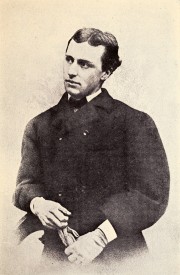
Henry James |
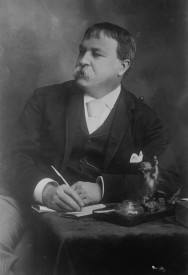
W..D. Howells |
Within The Virginian itself, Austen’s novels are contrasted with other reading that the hero likes much better. Three quarters of the way through the novel, Molly Stark nearly breaks things off with the Virginian, preparing to give up her school and move back to Vermont. The quarrel begins when he returns the two Austen novels he has borrowed from her.
“How do you like them?” she had then inquired; and he had smiled slowly at her.
“You haven’t read them!” she exclaimed.
“No.”
“Are you going to tell me there has been no time?”
“No.”
Then Molly had scolded her cow-puncher. . . .
“Why, it has come too late,” he had told her when the scolding was over. “If I was one of your little scholars hyeh in Bear Creek schoolhouse, yu’ could learn me to like such frillery I reckon. But I’m a mighty ignorant, grow’d up man.”
“So much the worse for you!” said Molly. (205)
As part of her punishment for him, she packs up “Robert Browning and Jane Austen” and stuffs them into her luggage (206).
When Molly nurses him in his recovery from being shot, the Virginian offers to try Austen again:
“This is the best show you’ll ever get to give me education. Won’t yu’ please try that Emma book now, ma’am? . . .”
“Molly proceeded with Emma slackly at first, but soon with the enthusiasm that Miss Austen invariably gave her. She held the volume and read away at it, commenting briefly, and then, finishing a chapter . . . , found her pupil slumbering peacefully.” (220–21)
He apologizes the next time they meet and explains: “As regyards that Emma book, yu’ see—yu’ see, the doin’s and sayin’s of folks like them are above me. But I think . . . if you could read me something that was about something, I—I’d be liable to keep awake” (221).
The Virginian’s opinion of Austen seems to correspond closely (and literally) to Roosevelt’s. What does the hero like, then? Shakespeare (especially Henry IV), Walter Scott (especially Kenilworth), and Turgenev (Fathers and Sons). Wister genders the appreciation of Austen in a way that matches Teddy Roosevelt’s opinions more than those of his literary friends. It seems that not only is Austen a touchstone for “Englishness,” but that she also represents a cultured education that doesn’t appeal to men of action.
Their correspondence and the preface to The Virginian (pictured here) show that Wister cared deeply about Roosevelt’s opinions on literature.2 Yet what of his two great friends, writers who showed their enormous appreciation of Austen—Henry James and W. D. Howells? James and Howells read Austen for her ability to draw character, to create perfectly natural conversation, and for her innovations in realism. They read her as a master of the art of the novel. So why then in this novel does Wister associate her with femininity and the East? Is it because he views her as essentially English rather than American? To what extent does the American relationship to her former colonizer affect Austen’s place in the Western?
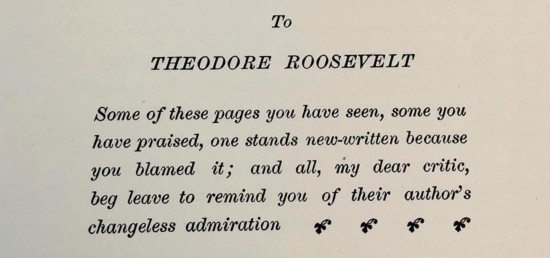
Close-up of the Dedication from The Virginian
One thing we haven’t considered yet is the all-important question of geography and sectionalism in the post-Civil War era. In the Western stereotype, and seemingly among Wister’s own friends, there is a geographical divide in the appreciation of Austen. Virile men from the West don’t like Austen; more well educated (and perhaps to his mind feminized) men from the Northeast U.S. do like her.3 Wister distinguishes between a traditionally masculine, aristocratic, chivalric South and a more educated, liberal, and feminized north.
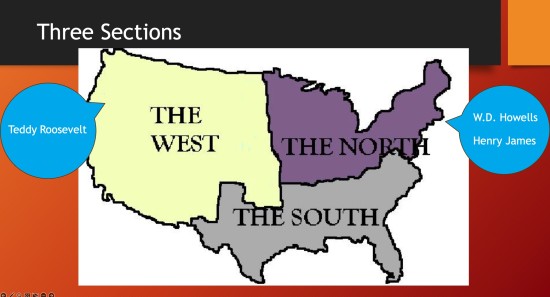
There were only three principal regions in the America for which Wister writes—North, South, and West—and they were divided by strong stereotyping that stemmed from the legacy of the American founding and the Civil War. They were also deeply shaped by the concept of the “frontier.” The frontier (as defined by Turner, promoted by Roosevelt, and depicted by Wister) is the great American mixing place, where tastes from a variety of sources are amalgamated into something that can be called characteristically American. Wister uses Austen to help create the dividing lines between wild West and cultivated East.4 Austen’s place is negotiated in this novel—as characters try to determine whether Austen belongs in the West. Her strong women (like Molly) would imply yes; her reputation for “frillery” and lack of “action” would argue no. In the end, Molly and her novels remain in the West, representing the Americanization of English culture—a frontier synthesis of East and West, North and South, manners and action. But to what extent is Wister forcing this Americanization onto Austen, and to what extent is there something in Austen’s novels themselves that speaks to the experience of the frontier and to American declarations of independence?
Wildness in Pride and Prejudice
The 250th anniversaries coming soon of Austen’s birth in 1775 and the Declaration of Independence in 1776 are helpful reminders that Austen and the United States grew up together. Austen would have been aware of American events occurring throughout her childhood and adolescence. We think about Austen’s life coinciding with the unrest between England and France surrounding the French revolution and the Napoleonic Wars. But Austen’s life also coincides with the revolution in the Americas. She was an infant when Thomas Jefferson penned the Declaration of Independence. She was writing her juvenilia while John Hancock presided over the Constitutional Congress. By the time of the war of 1812, Austen was ensconced happily in Chawton Cottage, writing furiously to make up for lost time. When President Madison asked Congress to declare war on Great Britain, Austen was making her final revisions to Pride and Prejudice. While Austen never mentions the United States in her novels, apart from one brief allusion in Mansfield Park, it is nonetheless likely that they, like France, helped shape her understanding of the world, including ideas on philosophical issues like liberty and wildness.
The nearby neighbor across the channel was a much more dangerous foe and more constant source of comparison during Austen’s lifetime and in her novels. She most likely spent much more time thinking about France than the young United States. I’m going to suggest that Austen used Pride and Prejudice to contrast British politics and aesthetics against French politics and aesthetics, analogously to the way Wister uses Austen to contrast the Western character and aesthetics against other sections of the United States and England. In both cases the authors show their homelands as exhibiting freedom without barbarity. In both cases, the authors celebrate characters who are unconventional yet moral, independent yet considerate: characters who inhabit a middle place between entirely wild and overly cultivated. Whether he fully understood it or not, in using Pride and Prejudice as a model, Wister was invoking a novel that accorded well with the self-shaping happening in the U.S. at the time he was writing. Austen’s championing of women’s equality, meritocracy, and independence of thought, as well as her way of seeking a middle ground to unite factions, also fits with Wister’s themes.
Pride and Prejudice mirrors some of the great political debates of the time—shown only very indirectly.5 An underlying question pervading the age of revolutions in the U.S. and France was, how do you achieve liberty and independence without sinking into chaos or anarchy? In the United States, writers strove to distance their rebellion against the extremes of the French rebellions that resulted in regicide, anarchy, and eventually renewed tyranny under Napoleon. In both Pride and Prejudice and Emma, Austen explores the contrast between wilderness and domestication, partly through the landscaping of the major estates in Pride and Prejudice.6
It’s helpful to consider the ongoing contest between the French baroque garden style and the newer and tremendously popular English garden. The French baroque was the ancien régime of gardening; its epitome was Versailles. Its characteristics include symmetry and sharp lines—perfectly pruned trajectories of sight that enable one to see objects far away and march there directly. The baroque geometry conveys supreme control over nature and accordingly the “Sun King’s” supreme control over his state. If, while frolicking, you misstep and overturn a topiary, you violate the order; the order of the English garden is much less fragile. The baroque garden suits the autocratic monarch, whereas the English alternative became a symbol of democratic freedoms.
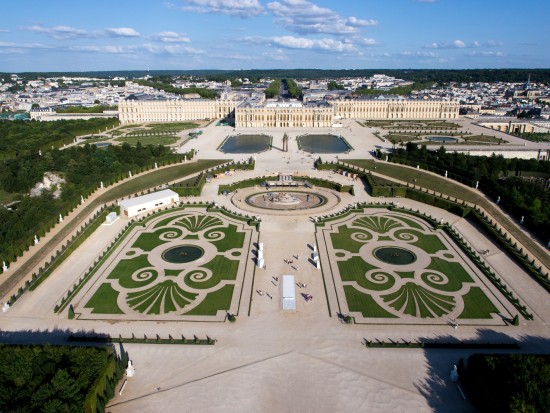
Vista from the baroque gardens of Versailles
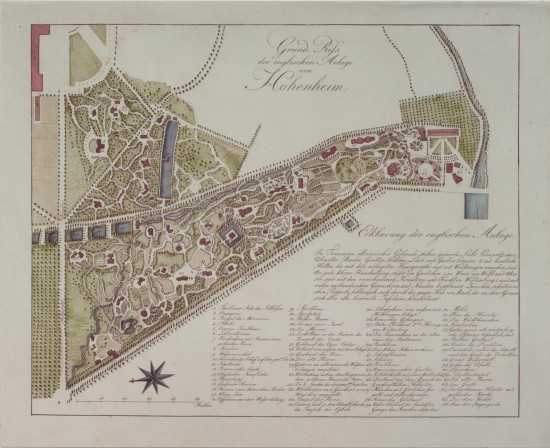
Map of the English Gardens at Hohenheim
(Click here to see a larger version.)
The key features of the English garden contrast directly with the French baroque. The English garden favors a naturalistic asymmetrical layout, serpentine paths (rather than axial and straight lines), and lively and irregular contrasts in texture, color, and pattern with the appearance of spontaneity. In contrast to the cultivated plants and flowers of the French baroque, the English garden celebrated a sense of liberty in the absence of visible fences or walls and the inclusion of a large variety of local flora and wildflowers. The English garden also included occasional ruins and gothic or exotic structures as eye catchers or as destinations. Vistas gave the sense of open space and possibilities. The English garden in general provided greater room for both individual privacy and leisure.
So how does this debate figure in Pride and Prejudice? I will briefly suggest it appears in the battle of estates among Rosings, Longbourn, and Pemberley, as Austen uses gardens to demonstrate the owners’ style of government.
Rosings:
As you might expect, Lady Catherine’s abode partakes much more of the French baroque style of landscaping than Pemberley does.7

Arrival at Rosings (Belton House) in the 1995 Pride and Prejudice
Consider one of the first times Elizabeth and the others approach Rosings:
When they left the high road for the lane to Hunsford, every eye was in search of the Parsonage, and every turning expected to bring it in view. The paling of Rosings park was their boundary on one side. Elizabeth smiled at the recollection of all that she had heard of its inhabitants. (176, my emphasis)
The descriptions of Rosings here and elsewhere use words like “boundary,” “paling,” and “gate.” (Palings are the vertical parts of a fence, generally metal fences—the thing one can get impaled on.) These boundaries overtly mark division and exclusion. And just as Elizabeth immediately associates the estate with its owner, we too are invited to do so.
We hear that Lady Catherine enjoys boundaries and distinctions of a different sort. According to Mr. Collins, “‘She likes to have the distinction of rank preserved’” (182, my emphasis).” As Lady Catherine understands the distinctions of rank, they amount to the excuse for tyranny of all sorts, even in conversation: “There was little to be done but to hear Lady Catherine talk, which she did without any intermission till coffee came in, delivering her opinion on every subject in so decisive a manner as proved that she was not used to have her judgment controverted” (185). Not only does she “very much object[ ] to be kept waiting for her dinner” (182), she also objects to evasions of her questions. Elizabeth observes that “Lady Catherine seemed quite astonished at not receiving a direct answer; and Elizabeth suspected herself to be the first creature who had ever dared to trifle with so much dignified impertinence!” (187). In this encounter as in all others, “Her air was not conciliating, nor was her manner of receiving them, such as to make her visitors forget their inferior rank. She was not rendered formidable by silence; but whatever she said, was spoken in so authoritative a tone, as marked her self-importance” (183). She is exacting and tyrannical in matters small and large.
It wouldn’t be so bad if Lady Catherine were only domineering in conversations, but subsequent passages make her social interference and political abuses clear. We all remember the insults of the private conversation Elizabeth and Lady Catherine have when she visits Longbourn. It might be less apparent that the significant boundaries and gated fence in Rosings8 are mentioned again when Darcy passes Elizabeth the famous letter.
The park paling was still the boundary on one side, and she soon passed one of the gates into the ground.
After walking two or three times along that part of the lane, she was tempted, by the pleasantness of the morning, to stop at the gates and look into the park. . . . She had turned away, but on hearing herself called, though in a voice which proved it to be Mr. Darcy, she moved again towards the gate. He had by that time reached [the gate] also, and [held] out a letter, which she instinctively took. (217–18, my emphasis)
Just as Lady Catherine herself tries to separate Elizabeth and Darcy, her fences and palings serve as a proxy, enforcing divisions between Elizabeth and Darcy at this point. The repeatedly mentioned gate through which Darcy passes the letter offers some hope of a future restoration.
Lady Catherine’s tyranny extends beyond her own property to the people whom she is expected to serve as landowner. These more political passages point to the serious harm she can inflict because of her tyrannical impulses and lack of care for those in her power.
Elizabeth soon perceived that though this great lady was not in the commission of the peace for the county, she was a most active magistrate in her own parish, the minutest concerns of which were carried to her by Mr. Collins; and whenever any of the cottagers were disposed to be quarrelsome, discontented or too poor, she sallied forth into the village to settle their differences, silence their complaints, and scold them into harmony and plenty. (190, my emphasis)
Through these passages and others, Austen portrays Lady Catherine de Bourgh, with her notably French surname, as a “Sun Queen” of sorts, a female Louis XIV—a totem of the ancien régime.
Longbourn:
The hyper-cultivation of Rosings stands in sharp contrast to the frontier-like elements of Longbourn. Not only is it the Wild West on the inside, but Austen uses the gardens at Longbourn to hint at differences in its government—for both better and worse. We hear of a “‘prettyish kind of a little wilderness’” and a “‘hermitage’” in their park (391). These features, often found in English-style gardens, connect Longbourn to wildness and a sense of freedom.
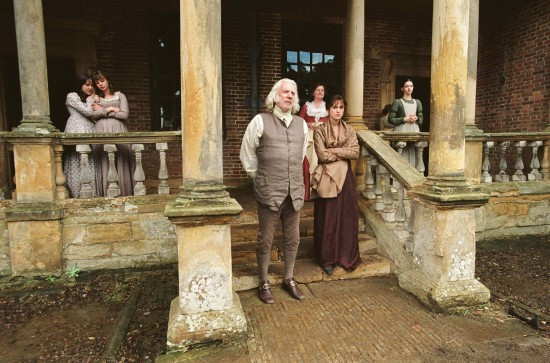
Longbourn (Groombridge Place) in the 2005 Pride & Prejudice
Mr. Bennet’s household rule is intermittent at best. The governance of Longbourn tends toward anarchy: Mr. Bennet “would never exert himself to restrain the wild giddiness of his youngest daughters” (236). He prefers to run away from conflict to the safe confines of his library. One of the characteristics that British Anti-Jacobins loved to note about the French revolution was that it was so extreme that it soon flipflopped to autocracy and tyranny. Similarly, Mr. Bennet’s rule has been so lax that he makes up for it by threatening tyranny at the end.
“I am not going to run away, Papa,” said Kitty, fretfully; “if I should ever go to Brighton, I would behave better than Lydia.”
“You go to Brighton!—I would not trust you so near it as East-Bourne, for fifty pounds! No, Kitty, I have at last learnt to be cautious, and you will feel the effects of it. No officer is ever to enter my house again, nor even to pass through the village. Balls will be absolutely prohibited, unless you stand up with one of your sisters. And you are never to stir out of doors, till you can prove, that you have spent ten minutes of every day in a rational manner.” (330–31)
Moderation escapes Mr. Bennet. His house remains a “wilderness” inside as well as outside.
Pemberley:
Among the estates and their parks, Darcy’s Pemberley alone finds the happy medium between centralized power and individual freedom, between hyper-cultivation and wildness. Pemberley accordingly represents Darcy’s gentler, more humane, more consistent, and more responsible rule.
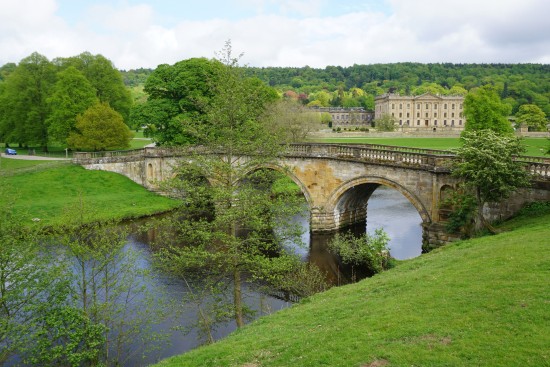
Approach to Chatsworth House (Pemberley in the 2005 Pride & Prejudice)
His estate proves a better guide to his character than his behavior outside of it. Consider Elizabeth’s approach to Pemberley, in contrast to her approach to Rosings:
[Pemberley] park was very large, and contained great variety of ground. They entered it in one of its lowest points, and drove for some time through a beautiful wood, stretching over a wide extent. . . . Pemberley House [was] situated on the opposite side of a valley, into which the road with some abruptness wound. It was a large, handsome, stone building, standing well on rising ground, and backed by a ridge of high woody hills. (271)
Rather than assertions of uniformity, Pemberley is remarkable for its “variety.” Rather than boundaries, palings, and gates, we hear of natural topography: “lowest points,” “a considerable eminence” (271). Instead of being set off by fences, the house is marked by woods and valleys and hills. Further, Pemberley’s distinction is rooted in nature: rather than its prominence being asserted through will and rank, its eminence is natural—being built on higher land.
There is of course much more one could say, but overall, the landscape gardening supports Mrs. Reynolds’s claims of Darcy’s being “‘the best landlord, and the best master . . . that ever lived. Not like the wild young men now-a-days, who think of nothing but themselves. There is not one of his tenants or servants but what will give him a good name’” (276). Rather than asserting his rule top down with frequent reminders of power, the passage suggests that the people accept his rule, and actively confer his good name. I will only mention in this regard, that his surname, of French origin, has been Anglicized to the point of naturalization. It is Darcy, not D’Arcy, and perhaps to Austen, that absent apostrophe helps to demonstrate his more admirable and more caring rule.
In short, the key distinctions between Lady Catherine and Darcy in terms of their style of government and management are apparent in the different styles of landscape gardening in their estates. These differences serve to underscore Austen’s purposeful separation of English parliamentary-style government based on the Magna Carta and the rule of law, over the brittle French baroque of the ancien régime or the radical excesses of the French revolution. The happy medium maintains stability without sacrificing individual freedoms; it creates a pleasing degree of cultivation without disrupting natural beauty. As in Austen’s novel, in The Virginian, Wister’s hero and heroine unite in their preference for nature—a desire to find peace within the natural order of the wilderness.
The wild women of Pride and Prejudice and The Virginian
In The Virginian, the main trajectory identifies the cow-puncher as “the wild man” and contrasts him with the culture of the Northeast (146, 229, 284).9 Molly loves him for his strength and connections to nature. Yet Molly herself, for her courage and independence, is the more remarkable character. The narrator informs us that: “It is not usual for young ladies of twenty to contemplate a journey of nearly two thousand miles to a country where . . . wild animals live unchained, . . . but Miss Mary Stark Wood was not a usual young lady” (57–58). According to the narrator, her independence stems from her famous grandfather, the General (“who battled so bravely as to send [the name Stark] thrilling down through the blood of generations of schoolboys”) as well as from a mixture of “pride and family pluck” when the “mills fail” and their family fortunes reverse (57, 58). Yet back in Bennington, Vermont, Molly is criticized for being too unconventional and independent.
One might think that “wildness,” at least among people, would be a negative characteristic in Austen’s novels.10 Yet in Pride and Prejudice Austen uses the word to describe Elizabeth almost as much as she uses it to describe Lydia (Lydia with 5 occurrences; Elizabeth with 4); no other sister is singled out in this way. (Only one other character is described with the word “wild”: Wickham.) Mr. Bennet never restrains the “wild giddiness” (236) of his younger daughters; Wickham excites Lydia’s “extravagant and wild admiration” (314); the narrator speaks of Lydia’s “wild volatility . . . and disdain of all restraint” (256); beautiful ornaments make her “quite wild” (264); and at the novel’s conclusion, “Lydia was Lydia still; untamed, unabashed, wild, noisy, and fearless” (348). Of Elizabeth we hear from Miss Bingley and Mrs. Hurst that she “‘really looked almost wild’” (39) with her dirty petticoats. Her mother scolds her not to “‘run on in the wild manner’” she does at home (46). And when she hears the news about Lydia’s elopement, Elizabeth was “wild to be at home” (309) and has “rapid and wild” conjectures (353). Why would the heroine be as nearly associated with wildness as Lydia Bennet?
I think Austen wants us to consider the deeper questions: When is wildness a virtue—a sign of authenticity or spontaneity? When does wildness equate to anarchy or chaos? Is there danger in over-domestication? When is wild and spirited independence to be admired, and when is it “conceited independence”? In fact, whereas Lydia’s wildness is never challenged, when you look closer, each of Elizabeth’s accusations is qualified in one way or another. In the first place, her descriptions come from the mouths of unreliable characters. Take for example, Miss Bingley’s complaint about Elizabeth’s petticoats: “‘To walk three miles, or four miles, or five miles, or whatever it is, above her ancles in dirt, and alone, quite alone! what could she mean by it? It seems to me to shew an abominable sort of conceited independence, a most country town indifference to decorum’” (39). And in the second place, her wildness uniformly stems from concern for her sisters’ well-being.
Lydia is wild according to the narrator; Elizabeth according to villains. Lydia breaches customs to suit her own passions and inclinations; Elizabeth to help her family. Nothing can constrain Lydia, but Elizabeth is generally restrained by consideration and manners. Only one of these ladies shows the capacity to self-govern. Just as Wister uses outlaws to set the Virginian’s gun-toting wildness into perspective, Austen uses Lydia’s selfish wildness to shine a positive light on Elizabeth’s spunk. A jog in the countryside that gets your petticoat muddy isn’t quite the same as roughing it in the unsettled West, but Elizabeth nonetheless evokes some of that feeling of dangerous and refreshing freedom.
One of Wister’s friends, W. D. Howells, goes so far as to call Elizabeth’s conversation with Lady Catherine “an insurrection,” inviting the political comparison of popular uprising and emphasizing that Austen “was in her way asserting the Rights of Man as unmistakably as the French revolutionists whose volcanic activity” coincided with Austen’s writing (Cady 319–20). Elizabeth’s “almost wildness” has more in common with Molly Wood than with Lydia. Wister invokes Molly’s revolutionary heritage to explain her strength and independence. Molly has the Stark family’s “good old Revolutionary blood” (346); someone trying to get her to stop nursing the Virginian and get some rest “encountered a rebel, independent as ever. . . . The revolutionist could not be put down” (214–15). Even though the Virginian himself is the most overtly exotic wild thing to tame in the novel, these women with a touch of wild disregard for both manners and maternal advice show themselves to be strong, independent, and quite equal to their future partners.
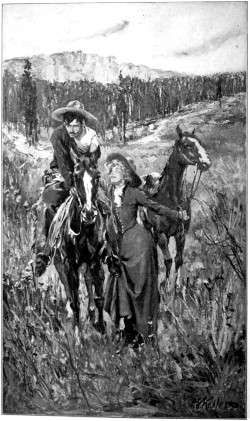
Molly’s rescue, frontispiece from
The Virginian
One important scene in The Virginian seldom made its way into the film adaptations. A major event occurs right between the two discussions of Austen, linking them: the Virginian is shot and abandoned near a river. Molly goes out riding in her irritation over their conversation and happens to find him unconscious and wounded. She saves his life with great courage and skill. It is after this rescue that he wants her to try Austen a second time. The novel, then, begins with the Virginian saving Molly from a lesser danger and offers a symmetrical gender-reversed rescue that is even more dramatic and important. Molly’s rescuing him puts the hero so much into her debt that he decides to release her from his proposals and to give up courting her. (Of course, this offer has the reverse effect.) More than once, the Virginian and others refer to her doing “the man’s part” in her heroism (216). Wister establishes an equality between the two that undermines some Western stereotypes.
While Elizabeth does not rescue Mr. Darcy, she nonetheless exhibits behavior that challenges traditional feminine boundaries. Most film versions of Pride and Prejudice add a tomboyish, masculine touch to the portrayal of Elizabeth. Austen celebrates her ideal “‘rational creature speaking the truth from her heart’” (122) in opposition to the revolutions of her time, attempting to avoid both American wildness and French tyranny. This ideal in some ways resembles Wister’s. Elizabeth and Molly are both “rational creatures” rather than “elegant females” (122). Through her depiction of gardens and female wildness, Austen shows that her heroines too can thrive in times of difficulty. In fact, in both novels the heroines face a moment of supreme social challenge in an outdoor setting. Pride and Prejudice and The Virginian feature parallel scenes of meetings between the “wild” and aristocratic characters. In both cases these encounters occur outdoors. Elizabeth confronts Lady Catherine in Longbourn’s outdoor “wilderness”; in The Virginian, the only one of Molly’s relatives to accept her “wild man” fully is also the only one to receive him outdoors. Molly’s and Elizabeth’s insurrections are too formidable to be fully enclosed in domestic spaces.
A more perfect union
As we have seen, both Wister and Austen stress the equality that is desirable in marriage, yet neither one limits this “more perfect union” to a domestic bubble. The equality of the couple promotes certain democratic ideals more broadly. In a sense, they both echo (intentionally or not) the Declaration of Independence and the preamble of the American Constitution.
Both Pride and Prejudice and The Virginian also place England in an international context. Wister uses his romantic pairing to symbolize a union of differing geographic and cultural factions in marriage. He imports Austen into his novel to make broader points about the divisions within the United States, and perhaps to point out the separation of his American ideal from England and its hereditary aristocracy.11 In doing so, however, Wister is not introducing something new. Austen herself used aesthetic choices in her novel to separate true merit from class structures and to distinguish between warring factions.
In Pride and Prejudice, the juxtaposition of the untamed wildness of the younger Bennet sisters at Longbourn against the palings and excessive fortification of Rosings reaches a synthesis in the mixture of nature and artifice, freedom and control, at Pemberley.12 Darcy exemplifies an ideal through his management of nature—through the landscaping at his estate as well as his reception of Elizabeth and the (appropriately named) Gardiners when they visit. The presence of both Wickham and Lydia on the one extreme of the wildness continuum and Mr. Collins and Lady Catherine on the hyper-cultivated or affected end of it helps ensure that we see Elizabeth and Darcy as moderating forces within the novel. These symmetries not only mark them as complementary figures but also place them on more equal footing. In the union of Elizabeth and Darcy, Austen shows an ideal fusion of opposites that unites her own country and represents a patriotic ideal.
Americans like to think of themselves as on the frontier, reshaping the republic into a more perfect union. The desired hallmark is an independence that avoids anarchy and tyranny. The Virginian himself is quite complicated in this regard, and in his own way seeks a moderation similar to Pemberley’s. In the novel, he is the character best able to attain a synthesis of liberty and order within the Wyoming territory, albeit through violence. Most of the sheriffs are corrupt and hired by the cattle thieves within the story. In pursuit of Western-style “law and order” (278), he both kills a murderer whom the law won’t punish (the murderer shoots first) and, in a memorable scene, is forced to hang his best friend for stealing cattle. The challenge and costs of maintaining peace within a wilderness might be a matter of manners and character in Pride and Prejudice, but in The Virginian they are issues of life and death.
In relation to France, Austen’s England positions itself as the more natural state, free enough to allow for independence of thought, where wildflowers are appreciated and too much lace is frowned upon. In bringing The Virginian together with Pride and Prejudice and Emma, I am most struck by how the relationship Austen alludes to between England and France—complaining indirectly of the excessive tyrannical and superficial orderliness of the French—is analogous to the relationship between the former American colonies and England. The Virginian similarly characterizes the benefits of the American West as allowing for greater freedom. His main comment about Jane Austen is to say there was too much “frillery.” In this opinion, the hero echoes Emma’s implicit perspective in opposing Mrs. Elton’s wish for more lace at the concluding wedding. Through this comment, the Virginian establishes a kinship between idealized England and the American West as bastions of freedom, nature, and unpretentious beauty.
NOTES
1See for example, Howells’s June 1900 essay “Jane Austen,” published in Harper’s Bazaar while Wister was composing The Virginian (Cady 314–33). The essay was republished in his volume Heroines of Fiction (1901).
2In a letter from 1903, Roosevelt mentions that The Virginian is among his very favorite novels (Roosevelt, Cowboys and Kings 2).
3In the novel, the women who admire Austen are from this region as well. There are no examples in the novel of Western women or Southern women liking Austen, so we can’t fully flesh out whether gender or region is more important to this distinction in the Virginian’s (and perhaps Wister’s) mind.
4The presence of outlaws, American Indians, and cowpunchers in The Virginian all reinforce the West’s stereotypical wildness. (The West is the wildest section, followed by the South, and then the North.) Similar stereotypes are applied to Europe: the French are disdained in this novel for excessive concern with reputation and manners (126, 222).
5The degree of political content in Austen is of course a long-debated issue. V. S. Pritchett may have been the first to consider Austen a “war novelist . . . formed very much by the Napoleonic wars” (28). Warren Roberts describes Austen’s engagement with the French and American revolution as “picking up the vibrations” of the cultural changes around her (7), not quite giving Austen full credit in her artistic choices. Marilyn Butler and Claudia Johnson were the first fully to acknowledge Austen’s purposeful literary engagement in political controversies.
6I won’t go into the connections between Austen and Gilpin, and the many ways that she represents the “picturesque” in her novels. I among others have written about this elsewhere (cf. Brodey “Avenues” and Ruined).
7Interestingly, the Mr. Collins character, the Rev. Dr. MacBride, is described in terms of gardens, and his style could almost be a reflection of the baroque style of Rosings: he seemed “the sort of gardener to keep old walks and vines pruned in their antique rigidity” (142).
8Boundaries would also naturally raise the thought of enclosure acts to Austen’s audience. Enclosure is another issue where picturesque aesthetics, self-aggrandizement, and caring for the poor come into direct conflict (Easton).
9When the Virginian wants clothes and wedding rings, “they must come from the best place in the country” (281), so he gets them from the East coast rather than the big Western towns. And yet there are wilder ones than he: primarily the outlaws and cattle thieves. In partially reversing the genders, Wister has Molly taming the untamed cowboys and loving untamed nature. But, at least for men, there is such a thing as being too wild in this story.
10In Pride and Prejudice, ideas about the proper degree of control and wildness tend to get worked out either via gardens or women’s propriety. Similar discussions about women’s “prospects” and gardens run through Austen’s works.
11Both the Virginian and the narrator discuss the Declaration of Independence (93, 96), and the transition from British aristocracy, which claimed levels of superiority and equality where they did not exist, and the more democratic results of meritocracy, or allowing people to rise according to their own merits and hard work.
12In Emma, the Americas drop out of the picture, perhaps as a result of the intense climax of the Napoleonic Wars. In this later novel, Austen politicizes the comparison of wilderness and domestication more directly to contrast France and England (to the detriment of France, of course).
